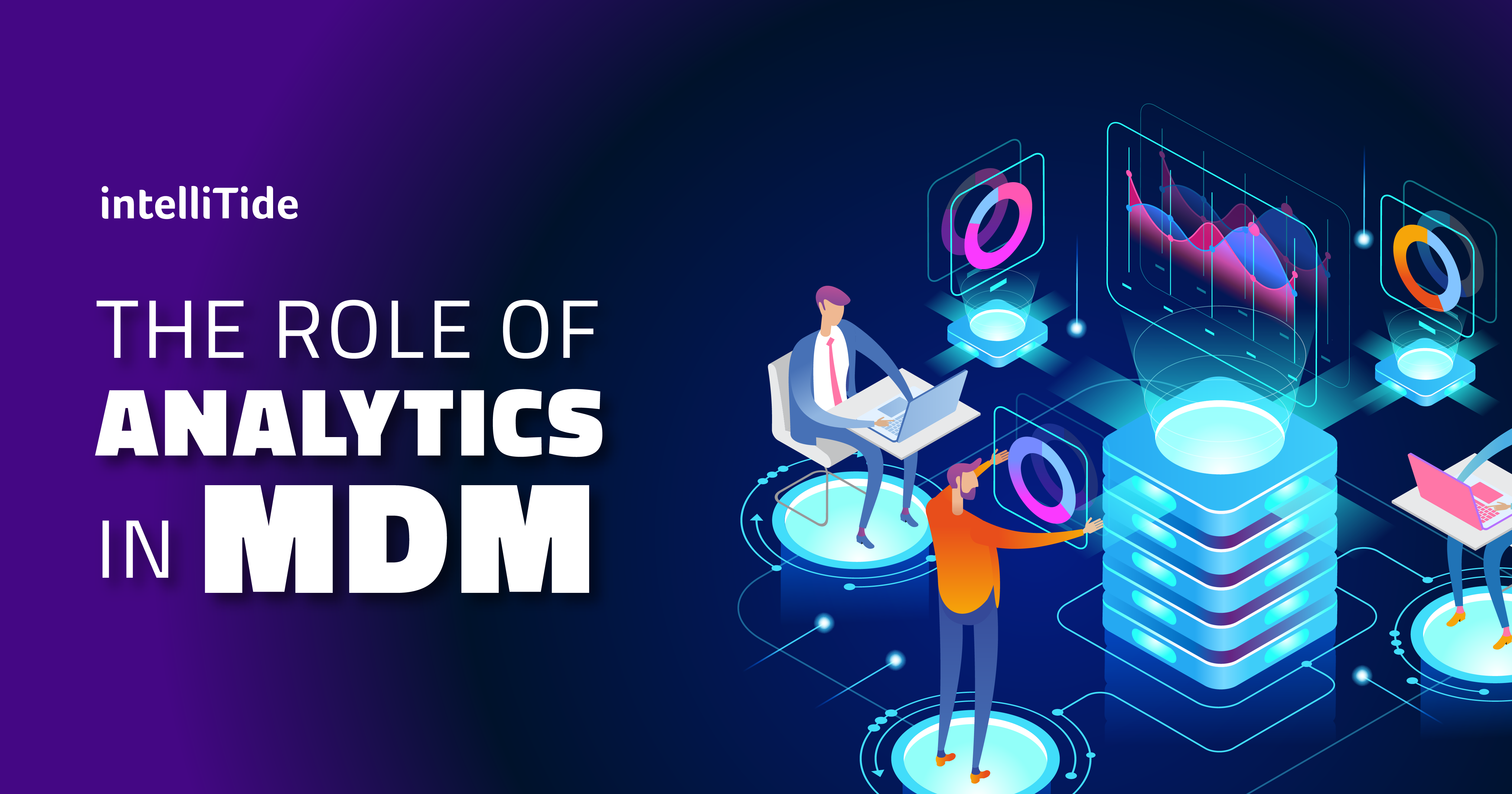The Role of Analytics in Master Data Management
Analytics + MDM: the ultimate Data Science equation
The interplay between Analytics and MDM is hard to miss, and yet, not recognized as widely as it should be. In this article composed of a two-part essay, join me as we uncover the dynamics between this power couple, arriving at the definitive equation:
Data Science = Data Management + Analytics!
Part I: The Role of Analytics in Master Data Management
Click here for Part II: The Role of Data Management (and MDM) in Analytics
The benefits of a Master Data Management (MDM) system are myriad. However, a historically overlooked advantage has been the use of analytics to extract insights from this vast trove of master data from the MDM systems, or analytics performed by the MDM systems themselves.
The traditional use of MDM systems leans heavily toward operational purposes including –
- Providing a single source of truth repository for master data
- Improving the quality of an enterprise’s master data
- Accelerating the time of product introduction from conception to sell (product domain) or quick onboarding of vendors or customers (vendor/customer domain)
Note that the topic of this article is not traditional reporting, visualization or dash-boarding which every MDM platform supports, usually out-of-box. However, more complex analytics that involve prediction, diagnosis, optimization and machine learning techniques for classification, regression and clustering are rarely employed and that is the focus of this blog.

Why is holistic Master Data important to Analytics?
A comprehensive 360-degree view of enterprise data, and critical insights to improve productivity, efficiency and positive financial outcomes cannot be achieved without the deep involvement (and understanding) of master data. Thus, analytics initiatives in an enterprise should consider a deeper involvement of master data and the MDM system supporting it. Even systems that merely consume master data but have analytics interests should consult the MDM implementers and acquire an understanding of master data.
Analytics use cases with Master Data
Here is a sampling of the analytics use cases that involve master data:
- Order-To-Cash: comprehensive product and sales analytics to determine sales vs. profitability using master data domains including product, customer and vendor
- Population Health Management: detect underperforming revenue parameters and predictively determine claim denial probability, readmissions, aging of payments, in-patient infections etc. by mining and analyzing master data elements from EHR, clinical and claims/billing data
- Data cleansing using ML: support Match/Merge and De-Duplication scenarios
- Data Enrichment using ML: Automatic SKU/Product classification and discovery of schemas and data types
- Image recognition using AI: Digital Asset Management (DAM) is a feature/add-on of many MDM products. Images in DAM can be fed to image recognition tools to automatically identify the product make, model and other attributes

MDM vendors and integrators have the front-row seat!
MDM solution vendors and MDM system integrators have a front-row seat to the data and are in a perfect position to analyze the data once the data management solution is implemented.
MDM implementers have intricate knowledge of their customers’ master data since they know about all the Data sources, Data elements, Entities, Attributes, Categories, Hierarchies and taxonomies, Relationships, Business processes and workflows, and Governance, just to name a few.
With this extensive knowledge of data, it is fair to state that MDM implementers, over the course of the implementation, gain a much better understanding of the data compared to the customer’s business users and data architects. So, with this intricate knowledge of the data one would think MDM solutions would have been more involved in analytics. Unfortunately, that has rarely been the case.
Why Analytics is underplayed in MDM
Water, water everywhere, but not a drop to drink!, So much of analytics could have been leveraged with so much data, but so little is done. Here are some of the reasons we think have contributed to MDM solutions having a minimal role in an enterprise’s analytics initiatives:
- Historically, the focus was on operational aspects of MDM, as mentioned in the introduction of this article.
-
Master data is operated in a sandbox: Once an MDM solution is implemented, master data tends to get siloed. Any reporting or business intelligence is performed within this siloed data set, and that too to achieve only operational reporting goals.
- Analytics relegated to consuming systems (and market intelligence vendors): Even in enterprises which deploy MDM systems, any meaningful analytics is usually performed by consuming systems that are recipients of the master data from MDM. Often this is for the benefit of the marketing or business intelligence teams and is performed without consulting the MDM implementation team or understanding of master data. Whatever the motivation, analytics performed with data from consuming systems is on subsets of data received by that system to address its specific needs and tend to focus on transactional data interpolated with narrow slices of master data.
4 Reasons why Analytics is becoming more crucial for MDM
The barren terrain of analytics in the MDM world will look a lot more fertile in the future. MDM vendors and customers are beginning to realize the potential of analytics on master data and analytical solutions, either as add-on features or tightly integrated with MDM platforms. Why this sudden shift? We can think of at least four reasons:
- MDM players are finally beginning to unleash the power of the data goldmine. MDM vendors are also looking to expand their portfolio and tout the analytical features of their platforms as a competitive advantage
- Customers are now more forthcoming in demanding analysis of master data – in real time. This is especially true for customers whose MDM implementations have attained operational maturity and are considering analytics as the next opportunity to squeeze ROI
- The value of analytics from data onboarding into an MDM system all the way to data syndication is now being recognized. This analytics within the MDM box will augment the analytics being performed at the destination by consuming systems
- Though we need to see more of this, the collaboration between the BI/data science and business teams with the MDM implementation group is increasing, leading to more comprehensive insights from master data

Continue reading in Part II: The Role of Data Management (and MDM) in Analytics


